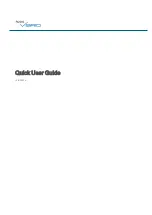
31
GMAW (MIG) WELDING CONTINUED
SHIELDING GAS
In addition to general shielding of the arc and the weld pool, the shielding gas performs a number of
important functions:
• forms the arc plasma
• stabilises the arc roots on the material surface
• ensures smooth transfer of molten droplets from the wire to the weld pool
The shielding gas will have a substantial effect on the stability of the arc and metal transfer and the
behaviour of the weld pool, in particular, its penetration. General purpose shielding gases for MIG welding
are mixtures of argon, oxygen and CO2, and special gas mixtures may contain helium.
The gases which are normally used for the various materials are:
• Steels: CO2, argon +2 to 5% oxygen, argon +5 to 25% CO2.
• Non-ferrous (e.g. Aluminium, copper or nickel alloys): Argon, argon / helium.
Argon based gases, compared with CO2, are generally more tolerant to parameter settings and generate
lower spatter levels with the dip transfer mode. However, there is a greater risk of lack of fusion defects
because these gases are colder. As CO2 cannot be used in the open arc (pulsed or spray transfer) modes
due to high back-plasma forces, argon based gases containing oxygen or CO2 are normally employed.
TRIGGER
WELDING WIRE
FLUX COATING
ROD
ARC
CONTACT TIP
DROPLETS
SHIELDING GAS
ARC
MOLTEN WELD METAL
SHROUD
WORK PIECE
WORK PIECE
WORK PIECE
WORK PIECE
WORK PIECE
WORK PIECE
WORK PIECE
WORK PIECE
STRAIGHT GROUND
CORRECT PREPERATION
- STABLE ARC
INCORRECT PREPERATION
- STABLE ARC
RADIAL GROUND
ARC WANDER
TUNGSTEN ELECTRODE
GAS LENS
STABLE ARC
FLAT TIP
POINTED TIP
GRINDING WHEEL
GRINDING WHEEL
FILLER WIRE
Note: Do not use wheel for other jobs or tugsten can become contaminated and cause lower weld quality
MIG WELDING
ARGON
Ar-CO
2
-O
2
MILD STEEL
√
√
√
√
X
√
X
X
X
X
STAINLESS STEEL
LOW ALLOY STEEL
GALVINISED STEEL
ALUMINIUM
M
MIG
WELDING
GAS SELECTION CHART
GUIDE














































